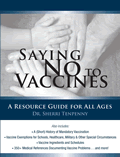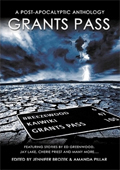GOVERNMENT REPORT: U.S. BORDER SECURITY STILL HAS WEAKNESSES
By
NWV News Writer Jim Kouri
Posted 1:00 AM Eastern
December 28, 2011
© 2011 NewsWithViews.com
The Government Accountability Office examined the results of covert tests conducted over more than 2 years and found significant weaknesses in the CBP inspection process at the ports of entry that were tested. In response to these tests, CBP developed a “Back to Basics” course.
Recent incidents involving potential terrorists attempting to enter the country highlight the need for a vigilant and well-trained workforce at the border. U.S. Customs and Border Protection (CBP), within the Department of Homeland Security, is the lead federal agency in charge of inspecting travelers and goods for admission into the United States.
About 20,000 CBP officers play a central role in ensuring that CBP accomplishes its mission of securing the border while also facilitating the movement of millions of legitimate travelers and billions of dollars in international trade.
The Government Accountability Office was asked by members of Congress to assess the extent to which CBP has revised its training program for newly hired CBP officers in accordance with training standards and identified and addressed the training needs of incumbent CBP officers. The GAO analyzed data and documentation related to the agency’s training efforts, such as its covert test program and its training records. GAO also interviewed CBP senior officials as well as rank-and-file officers.
CBP revised its training program for newly hired CBP officers in accordance with its own training development standards. Consistent with these standards, CBP convened a team of subject-matter experts to identify and rank the tasks that new CBP officers are expected to perform. As a result, the new curriculum was designed to produce a professional law enforcement officer capable of protecting the homeland from terrorist, criminal, biological and agricultural threats.
In addition, the curriculum stated that the CBP officer is to draw conclusions and take appropriate action to identify behavioral indicators displayed by criminals, effectively interview travelers to identify potential threats, identify fraudulent documents, and use technology in support of the inspection process.
CBP has taken some steps to identify and address the training needs of its incumbent CBP officers, but could do more to ensure that these officers are fully trained. GAO examined CBP’s results of covert tests conducted over more than 2 years and found significant weaknesses in the CBP inspection process at the ports of entry that were tested. In response to these tests, CBP developed a “Back to Basics” course in March 2010 for incumbent officers but has no plans to evaluate the effectiveness of the training.
Moreover, CBP has not conducted an analysis of all the possible causes or systemic issues that may be contributing to the test results. Further evaluation of the training and causes underlying covert test results could help inform CBP about whether the training is sufficient to address the weaknesses identified by the covert tests or if adjustments are needed.
In addition, CBP offices are responsible for recording their employees’ training records; however, CBP does not have a policy that assigns responsibility to port management to ensure that their staff enter data into its training records system completely and accurately.
A policy outlining the roles and responsibilities of offices and positions for training could help clarify which offices and positions are responsible for identifying and addressing training needs and for holding these offices accountable for their responsibilities. Moreover, CBP currently does not have reliable training completion records to ensure CBP officers received required training or other training relevant to their assigned duties.
Based on GAO’s analysis of training records, more than 4,000 customs officers have not completed the immigration fundamentals, immigration law, and agricultural fundamentals courses, although they were required to complete them during a cross-training program.
According to CBP, the training completion records are incomplete, and it is likely that the officers did not complete the required cross-training. Nevertheless, without reliable training records; CBP cannot provide reasonable assurance that all customs officers completed the required cross-training.
The GAO report concludes that the CBP has not conducted a needs assessment that would identify any gaps between identified critical skills and incumbent officers’ current skills and competencies. A needs assessment could enhance CBP’s ability to ensure its workforce is training to meet its mission.
| Subscribe to the NewsWithViews Daily News Alerts! |
President Barack Obama and Secretary of Homeland Security Janet Napolitano applauded the latest U.S. Customs and Border Protection (CBP) report that claims an increase in illegal drug seizures and a decrease in illegal border-crossers in fiscal year 2011. CPB claims in a press statement that these results are due to one of the largest increased in manpower and resources along the country’s borders.
However, members of the Border Patrol agents' union -- the National Border Patrol Council -- say the report is misleading and that the increase in drug seizures actually means the Mexican cartels are more active and smuggling more drugs into the U.S.
© 2011 NWV - All Rights Reserved










 Share
This Article
Share
This Article






